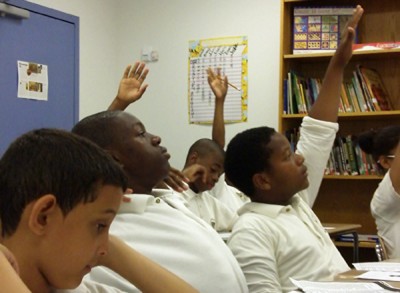The charter-school movement reached a milestone this week: Charter schools, which are publicly funded but typically privately managed, now educate more than two million students, up from around 1.8 million last year. Despite the heated debate over charter schools, the number is still relatively small considering the size of the K-12 student population in U.S. schools: 55.4 million, according to the federal government’s most recent “Digest of Education Statistics.”
The announcement, made by the National Alliance for Public Charter Schools (NAPCS), comes as some states are lifting caps on the number of charter schools, and as major charter-management organizations (CMOs) like KIPP and Rocketship Education are receiving federal dollars to expand their programs.
“To some extent, there’s a muscling aside of the small mom-and-pop-type charters by the more networked charter-management-organization-run charters that depend on a larger scale,” said Jeffrey Henig, a professor at Teachers College, Columbia University, who has studied charters. “A lot of them started early on at lower grade levels with adding a grade a year, so this is a building-out that’s been reasonable to anticipate.”
Related Stories
New Jersey greatly slows charter school growth
Shortage of qualified leaders imperils charter movement
More than 500 charters opened for the first time in the 2011-12 school year, the greatest growth since the charter movement began in Minnesota in 1992. According to NAPCS, more than 200,000 students are attending a brand-new charter school this fall, and 400,000 more are on waiting lists. Nearly half of the country’s 5,600 charter schools are concentrated in just five states: Arizona, California (where 20 percent of them are located), Florida, Ohio and Texas.
While a record number of charter schools have opened this year, 150 were shuttered for either low enrollment, financial troubles or weak academic performance, according to NAPCS. Charter critics often point to data showing that only 17 percent of charters outperform nearby traditional public schools, but proponents say closures are evidence that charter-school laws are working.
Henig explains that while he thinks charters will continue to see their enrollments grow, “two million is still a drop in the bucket for the overall public-school population.” He says that successful CMOs are sometimes pressured by the U.S. Department of Education and philanthropic foundations into expanding more quickly than they’d like.
“It’s pretty clear charters are a reform that’s here to stay,” says Henig. “And all of that despite the fact that the evidence of their greater effectiveness is limited.”




